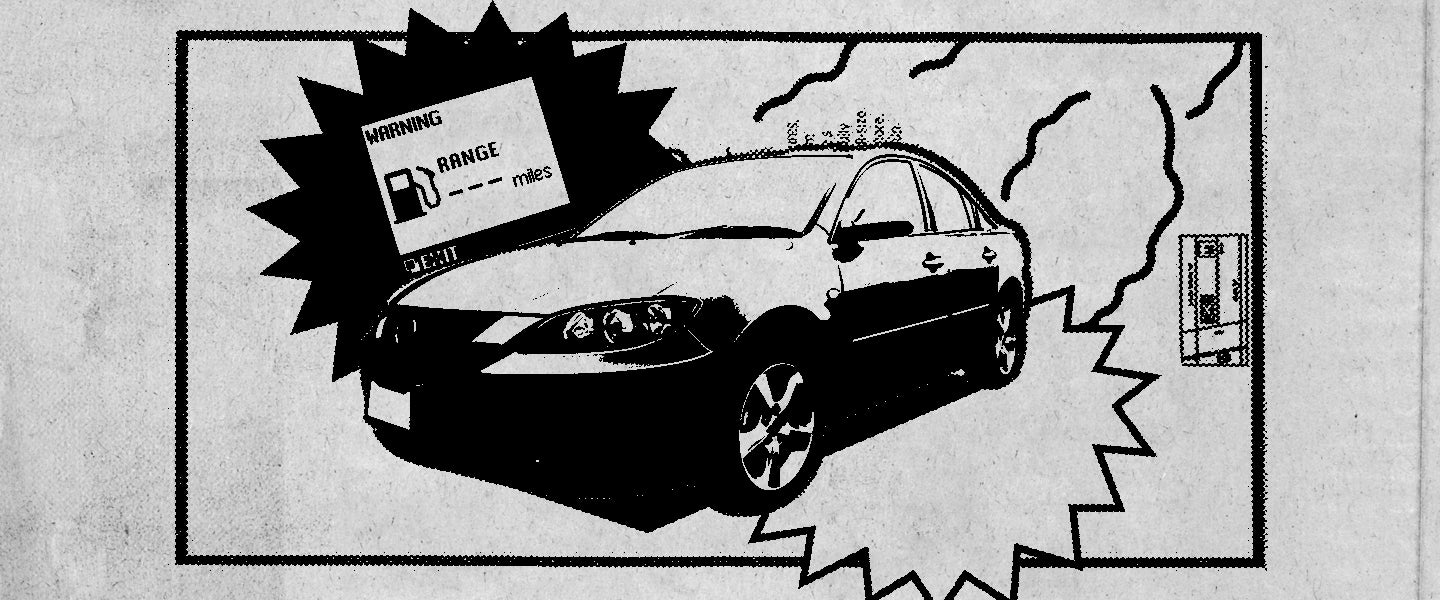If the modern automobile had a status on Facebook, it would undoubtedly be “It’s complicated.” With their computer-controlled fuel injection systems, continuously variable transmissions and three-phase four-pole AC induction motors, the days when every Dick, John and Harry could wrench on their ride seem long gone.
But you don’t need to be a gearhead to master the basics. In fact, despite cars’ complicated nature, not much has changed when it comes to the simple stuff — and when it comes to Car Knowledge 101, there are no questions too dumb.
I’m really bad about putting gas in my car. Sometimes when the fuel light comes on, I’ll drive another 5 to 10 miles before hitting up a pump, but I’m always scared I’m going to run out of gas before I get there. Am I freaking out for nothing?
The answer is… yes. And no.
When your car’s fuel light comes on, you wouldn’t be blamed for thinking, “Oh shit, my car’s going to run out of gas on the side of this highway and I’m gonna have to wait for AAA to come and everyone’s gonna see me stranded here like a doofus and it’s gonna be SO embarrassing.” But that’s not quite the case. Yes, your car will, eventually, run out of gas, and no one wants anything to do with that minor nightmare. But when the manufacturer made your car, they added a significant amount of “padding,” i.e., reserve space, to your gas tank because they knew that procrastinators like you exist.
How much padding? It all depends. On most cars, you can drive anywhere from 30 to 100 miles on an “empty” tank. Yeah, that’s a big range, but calculating how many miles your car can go before filling up takes nothing more than a little bit of math. To calculate, simply drive normally until your fuel indicator reads empty, and then head to the gas station. Note how many gallons it takes to fill ‘er up, and write the number down. Then, grab your car’s owner’s manual and flip to the page that shows how many gallons your tank holds. Subtract the first number from the second number, and then multiply the difference by your average fuel economy. For example:
16-gallon fuel tank – 14 gallons to full x 23 average miles per gallon = 46 est. miles of reserve range*
But wait a second — remember when I said that the answer to your question was both “yes,” and “no”? Sure, you could drive a fairly long way on your reserve tank, but just because you can, doesn’t mean you should. Yes, your manufacturer did build that padding in because your irresponsible ass can’t be trusted to make it to a gas station in a timely fashion, but there’s also another very good reason they did so: Because running your car’s fuel pump on a dry tank is really, really not good for it.
In order to operate correctly, your fuel pump needs that sweet, sweet gasoline to cool its hot innards, specifically the copper coils that produce the electric charge that runs the pump. When your tank is empty, there’s little-to-no gas cooling those coils, and that can burn your pump right out — a costly affair, considering I know you’re not going to be the one to change it out.
Moral of the story? It’s totally reasonable to believe that you could drive an extra 30-plus miles once your fuel light comes on. But there’s a difference between “could” and “should.”
*Don’t push the limit, yo. They don’t call it an “estimate” for nothing.

